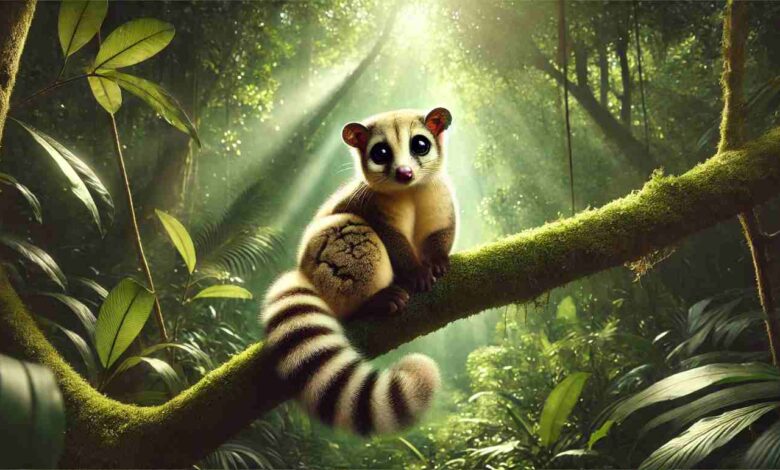Cuscus Animal: Habitat, Behavior, Human Interactions, and More

Understanding the Cuscus Animal
Cuscus animal are medium-sized marsupials that belong to the family Phalangeridae. They are closely related to possums and are easily recognized by their round bodies, large eyes, and thick, woolly fur. The fur of cuscuses can vary greatly in color, ranging from gray and brown to vibrant patterns with spots or stripes. This variety in appearance helps them camouflage and avoid predators.
A distinctive feature of the cuscus animal is its prehensile tail, which is approximately the same length as its body. This tail is a crucial adaptation for their arboreal lifestyle, enabling them to grasp branches and move easily through the forest canopy. In addition to their tails, cuscuses have strong limbs and sharp claws that further enhance their climbing abilities.
Habitat of the Cuscus
Cuscuses are largely found in the tropical forests of New Guinea, the islands near it, and northern parts of Australia, such as the Cape York Peninsula. Living high in the trees, where occupants can find food and shelter from predators.
This species was shown to be able to adapt well ecologically in many types of forests such as lowland rainforests, montane forests, and mangroves. Their adaptability to such a spectrum of forests is itself witness to their ability and versatility in surviving the variety of conditions they may encounter. Yet, their home is decreasingly being threatened by deforestation and human actions endangering their very survival.
Behavior and Lifestyle
Cuscuses are nocturnal, which means they become active during the night hours. They spend the daytime safely in treetops, usually hidden among dense foliage. Being nocturnal helps these birds avoid predators and compete less with daytime species for food.
Cuscus tend to be very shy on their own, but they are much more social, especially during the breeding season. Birds will use soft vocalizations and scent markings to claim territories and also send out messages for potential mates. Due to this, they move with slow and careful motions; an energy-sparing technique that remains unnoticed by potential predators.
Diet and Feeding Habits
Cuscuses are mostly herbivorous, with their diet comprising leaves, fruits, and flowers. Their potent jaws and unique digestive system allow them to process vegetation. Sometimes they do eat small birds or reptiles, but they are opportunistic feeders.
With their much lower metabolism and selective browsing, they are better adapted to life in the rainforest. Their high canopy foraging behavior effectively allows them to avoid the threat of running into predators on the ground.
Reproduction and Life Cycle
Cuscuses display the distinctive reproductive strategy of marsupials. Their breeding season is undefined and can take place at any time of year. A few days later, a tiny baby is born to go on growing inside her pouch till it is more fully developed.
Cuscuses stay in their mother’s pouch for months before exploring beyond her tree. As they mature and become better at navigating the forest, young tree kangaroos sometimes ride on their mother’s back. This prolonged care ensures that the kit will be well-prepared for life in the canopy.
Human Interactions and Conservation
Human interactions with cuscuses have been both beneficial and detrimental. Indigenous peoples in New Guinea have traditionally hunted cuscuses for their meat and fur, which are used to make clothing and ceremonial items. While these practices are culturally significant, they have contributed to the decline of certain cuscus populations.
Habitat destruction due to logging, agriculture, and urbanization poses a significant threat to cuscus populations. Conservation efforts are underway to protect their habitats and promote sustainable practices that minimize human impact on these unique animals.
Some cuscus species are on the IUCN Red List, ranging from ‘Least Concern’ to ‘Critically Endangered’. Conservation organizations are working to raise awareness about the importance of preserving these animals and their habitats.
The Bottom Line
The cuscus animal is amazing and has a number of special adaptations that help it survive in its demanding rainforest environment. Their lifestyles in the trees, nocturnal lifestyle, and specialized diet place them among a wide range of unique marsupial lifestyles in both Australia and New Guinea. Golden bamboo lemurs aren’t endangered by nature, but human activity has created issues needing conservation.





